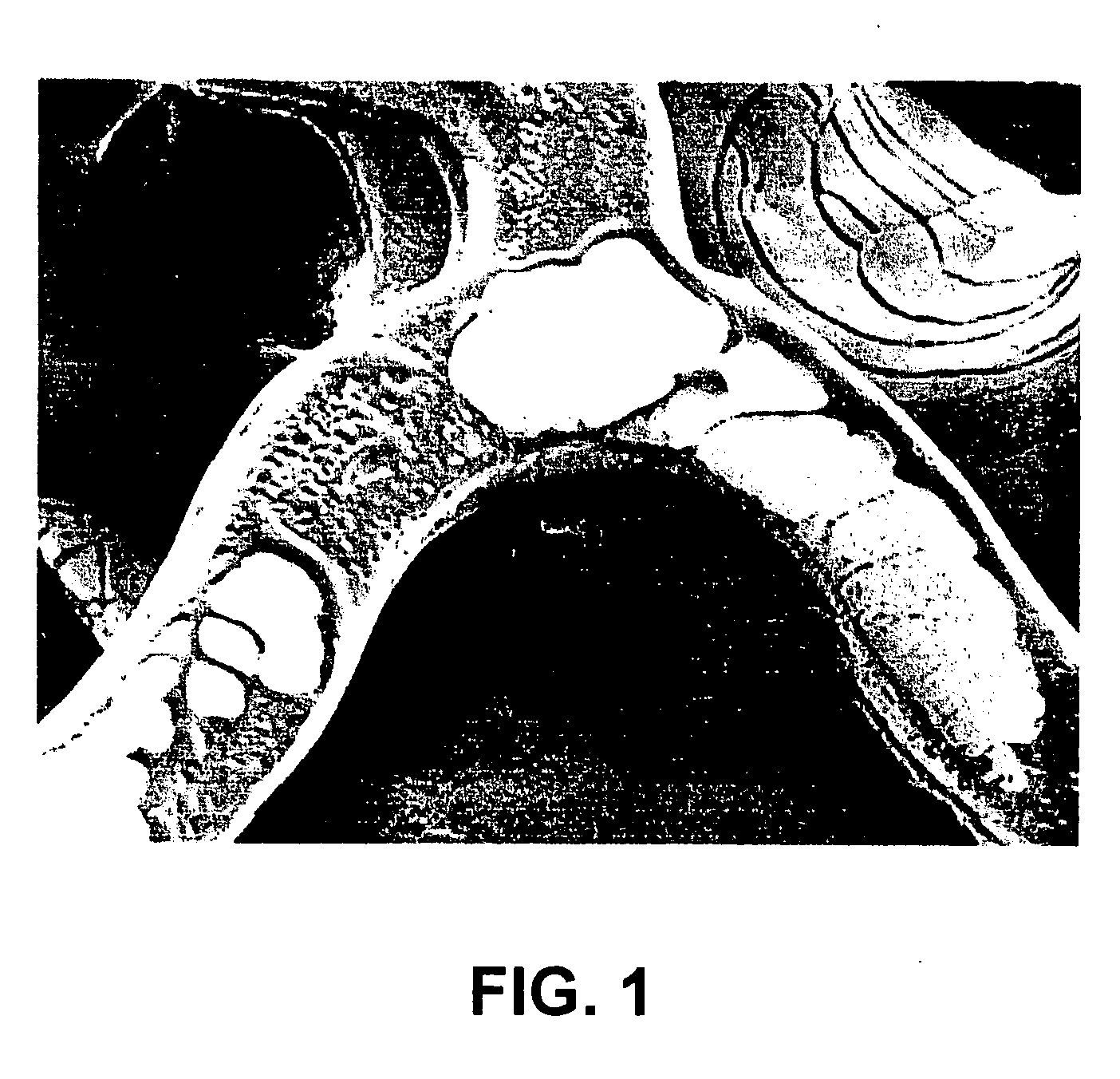Poly(ester amide) coating composition for implantable devices
a technology of polyester amide and coating composition, which is applied in the direction of prosthesis, packaging goods, packaging foodstuffs, etc., can solve the problems of extensive balloon shear damage along the luminal stent, mechanical failure of the coating's adhesive quality, etc., and achieve the effect of improving the surface and mechanical properties of the coating and lowering the surface energy of the pea coating
- Summary
- Abstract
- Description
- Claims
- Application Information
AI Technical Summary
Benefits of technology
Problems solved by technology
Method used
Image
Examples
example 1
[0035] One useful surface blooming composition would be a B-A-B triblock copolymer wherein B is a mono-functional fluorinated alcohol component known as BA-L (available from Du Pont de Nemours, Wilmington, Del.), and A is a hydroxy terminated poly(caprolactone) of molecular weight 1000 known as CAPA 210 (available from Solvay Interox, Houston, Tex., USA). Synthesis of the triblock is accomplished by using 1,6-hexanediisocyanate (HDI,) and an appropriate catalyst such as dibutyltin dilaurate, in a solvent such as dimethylacetamide using what is essentially standard urethane chemistry. In this synthesis, the monofunctional fluoroalcohol is first reacted with two equivalents of HDI. Addition of the hydroxy-terminated polycaprolactone to the now isocyanate functionalized fluorocompounds produces the triblock copolymer. This surface blooming compound can be used in a PEA composition for coating a drug eluting stent.
[0036] A first composition can be prepared by mixing the following compo...
PUM
| Property | Measurement | Unit |
|---|---|---|
| contact angle | aaaaa | aaaaa |
| size | aaaaa | aaaaa |
| size | aaaaa | aaaaa |
Abstract
Description
Claims
Application Information
 Login to View More
Login to View More - R&D
- Intellectual Property
- Life Sciences
- Materials
- Tech Scout
- Unparalleled Data Quality
- Higher Quality Content
- 60% Fewer Hallucinations
Browse by: Latest US Patents, China's latest patents, Technical Efficacy Thesaurus, Application Domain, Technology Topic, Popular Technical Reports.
© 2025 PatSnap. All rights reserved.Legal|Privacy policy|Modern Slavery Act Transparency Statement|Sitemap|About US| Contact US: help@patsnap.com



